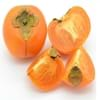Health Benefits
Cancer prevention, Heart care, Prevents Urinary Tract Infection
Anti-oxidant properties, Beneficial in curing fever, Cancer prevention, Heart care, Reduces nervous tension
General Benefits
Digestive aid, Fights against infections, Flu treatment, Healing of wounds, Helps in weight loss, Treatment of common cold
Anti-inflammatory properties, Boosts immune system, Controls blood pressure, Digestive aid, Eye care, Fights against infections, Helps in weight loss, Improves blood circulation
Skin Benefits
Anti-aging benefits, Brightens and lightens complexion
Anti-aging benefits, Brightens and lightens complexion, Reduces wrinkles
Hair Benefits
Promotes longer and healthier hair, Protects hair
Good conditioner, Promotes longer and healthier hair, Treatment of dandruff
Allergy Symptoms
Abdominal cramps, Abdominal pains, Diarrhea, Lightheadedness, Nasal congestion, Nausea, Swallowing difficulties, Swelling of mouth, tongue or lips, Vomiting
Abdominal pains, Anaphylaxis, Inflammation
Side Effects
Allergic reaction, Dizziness, Stomach pain
Affects blood glucose levels, Decrease in blood sugar levels, Coagulation
Best Time to Eat
As a snack in the late afternoon, Don't consume at night and before bed, Eat the fresh ones, avoid mixing with any other foods, don't eat after meal., Morning time (before lunch)
Along with meal, As a snack in the late afternoon, Don't consume at night and before bed, Eat the fresh ones, avoid mixing with any other foods, don't eat after meal.
Vitamin B1 (Thiamin)
Not Available
Vitamin B2 (Riboflavin)
Not Available
Vitamin B3 (Niacin)
Not Available
Vitamin B6 (Pyridoxin)
Not Available
Vitamin C (Ascorbic Acid)
Calories in Fresh Fruit with Peel
Calories in Fresh Fruit without Peel
Not Available
Not Available
Calories in Frozen Form
Not Available
Not Available
Calories in Canned Form
Not Available
Not Available
Calories in Jam
Not Available
Type
Citrus, Tropical
Berry, Tree fruit
Season
All seasons
Autumn, Winter
Varieties
Chandler, Cocktail, Cuban Shaddock, Hirado Buntan, Honey, Jaffa Red, Mato Buntan, Pomelit, Reinking, Siamese Sweet and Sweetie
Early Golden, John Rick, Miller, Woolbright and Ennis
Color
Green, Pink, Red, Yellow
Orange, Red, Yellow
Inside Color
Creamy Yellow
Yellow
Origin
Malaysia, South-Eastern Asia, Thailand
Eastern United States
Soil Type
Clay, Loam, Sandy
Sandy loam, Well-drained
Climatic Conditions
Warm
Can tolerate wide range of climates, Sunny
Facts about
- Flowers of pomelo fruit are used to make perfumes.
- Pomelo tree wood is used for the manufacture of tool handles.
- Life of pomelo tree is around 10 years.
- Height of pomelo can be 15-20 feet.
- It is said that formation of seeds inside the persimmon fruit shows what type of winter is coming(type of snow).
- There are about 2000 varieties of this fruit.
- The American persimmon has another name 'Possumwood'.
Other Countries
Argentina, India, Israel, Mexico, South Africa, Sudan, Thailand, Turkey, United States of America
Azerbaijan, Brazil, Costa Rica, Japan, Korea, Pakistan
Top Importer
Europe
United States of America
Top Exporter
United States of America
United States of America
Botanical Name
Citrus maxima
Diospyros virginiana
Synonym
Citrus grandis
Not Available
Subkingdom
Tracheobionta
Tracheobionta
Division
Magnoliophyta
Magnoliophyta
Class
Magnoliopsida
Magnoliopsida
Subclass
Rosidae
Dillenhidae
Order
Sapindales
Ericales
Family
Rutaceae
Ebenaceae
Species
C. maxima
D. virginiana
Generic Group
Citrus fruit
Not Available
Difference Between Pomelo and American Persimmon
We might think that Pomelo and American Persimmon are similar with respect to nutritional value and health benefits. But the nutrient content of both fruits is different. Pomelo and American Persimmon Facts such as their taste, shape, color, and size are also distinct. The difference between Pomelo and American Persimmon is explained here.
The amount of calories in 100 gm of fresh Pomelo and American Persimmon with peel is 38.00 kcal and 127.00 kcal and the amount of calories without peel is Not Available and Not Available respectively. Thus, Pomelo and American Persimmon belong to and category.These fruits might or might not differ with respect to their scientific classification. The order of Pomelo and American Persimmon is Sapindales and Ericales respectively. Pomelo belongs to Rutaceae family and American Persimmon belongs to Ebenaceae family. Pomelo belongs to Citrus genus of C. maxima species and American Persimmon belongs to Diospyros genus of D. virginiana species. Beings plants, both fruits belong to Plantae Kingdom.









